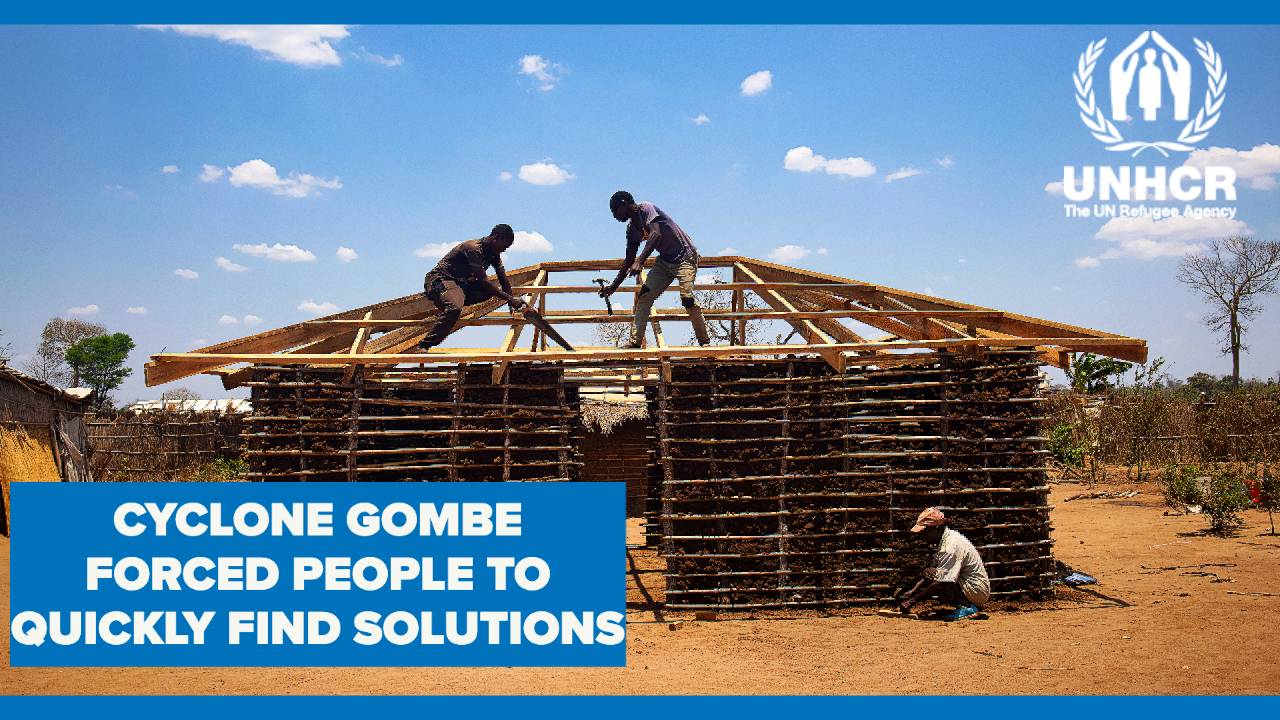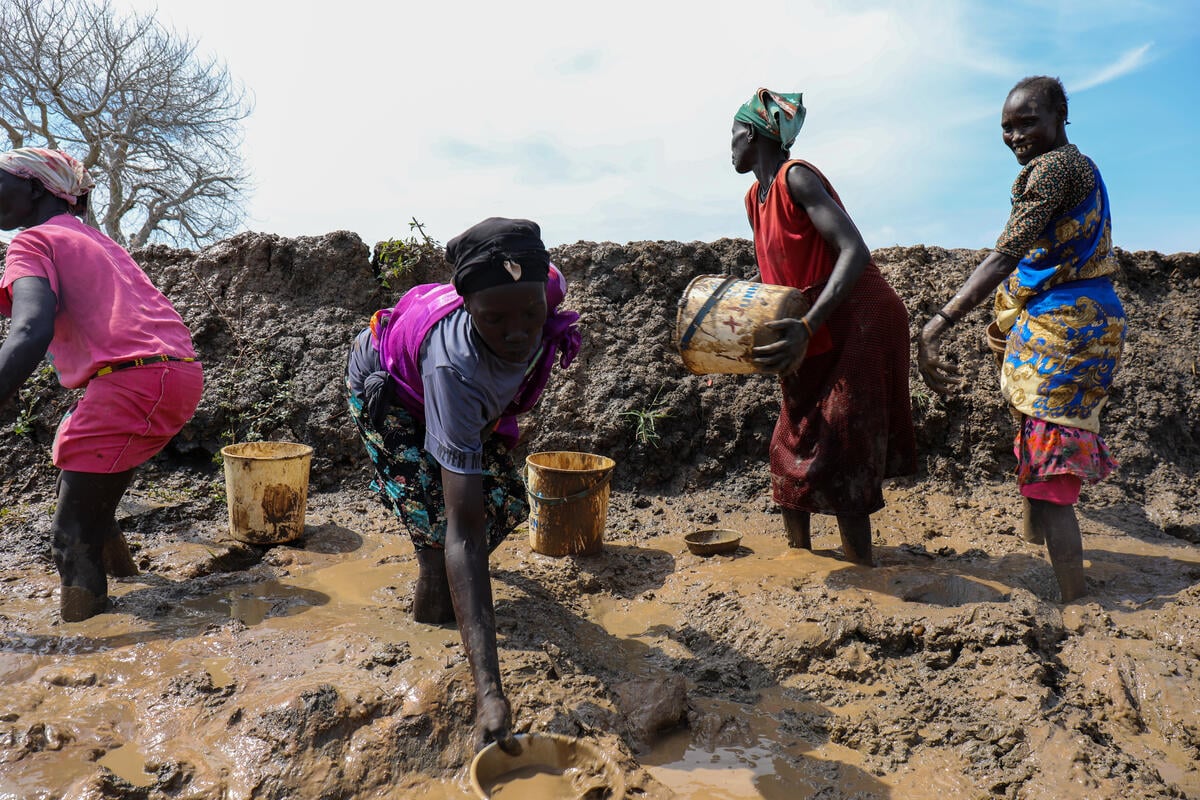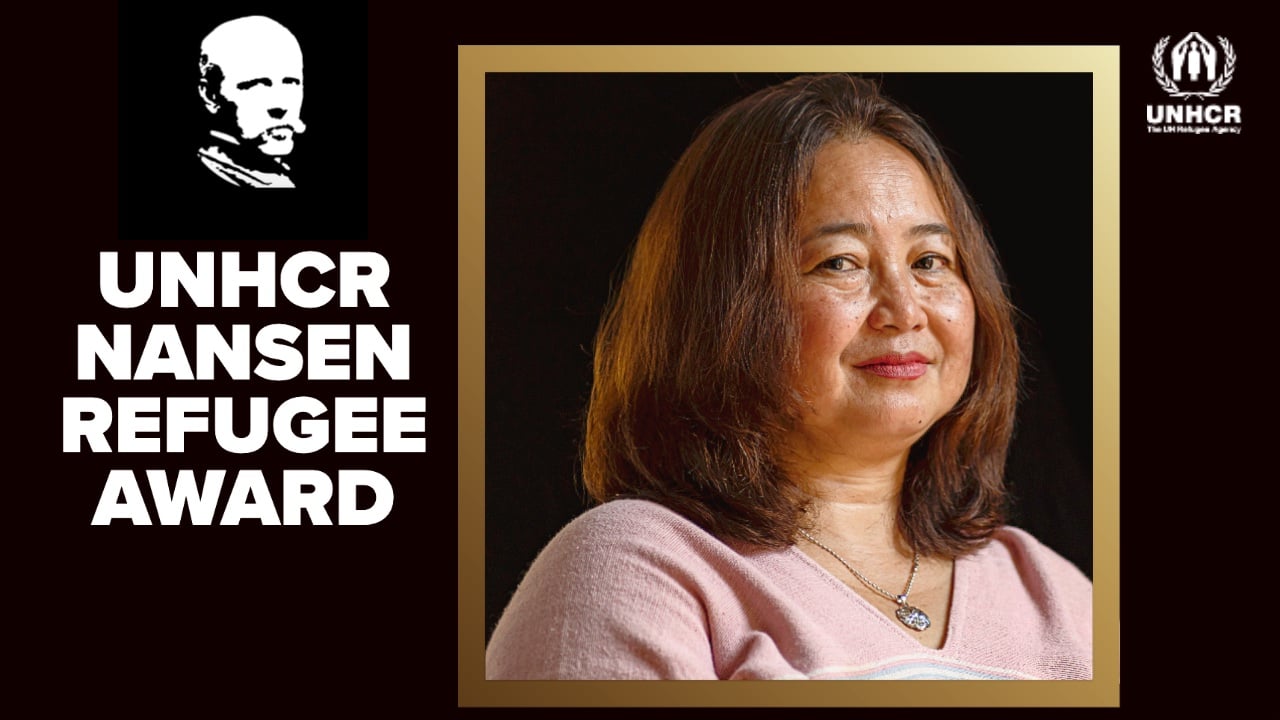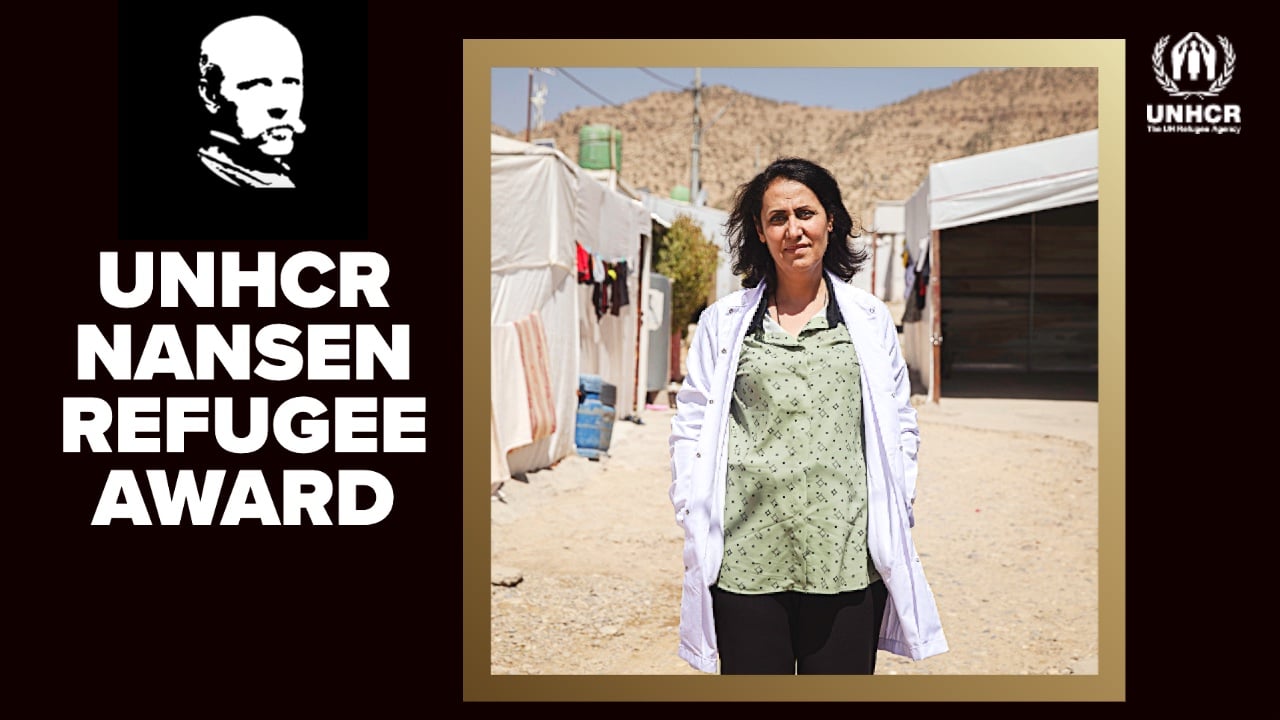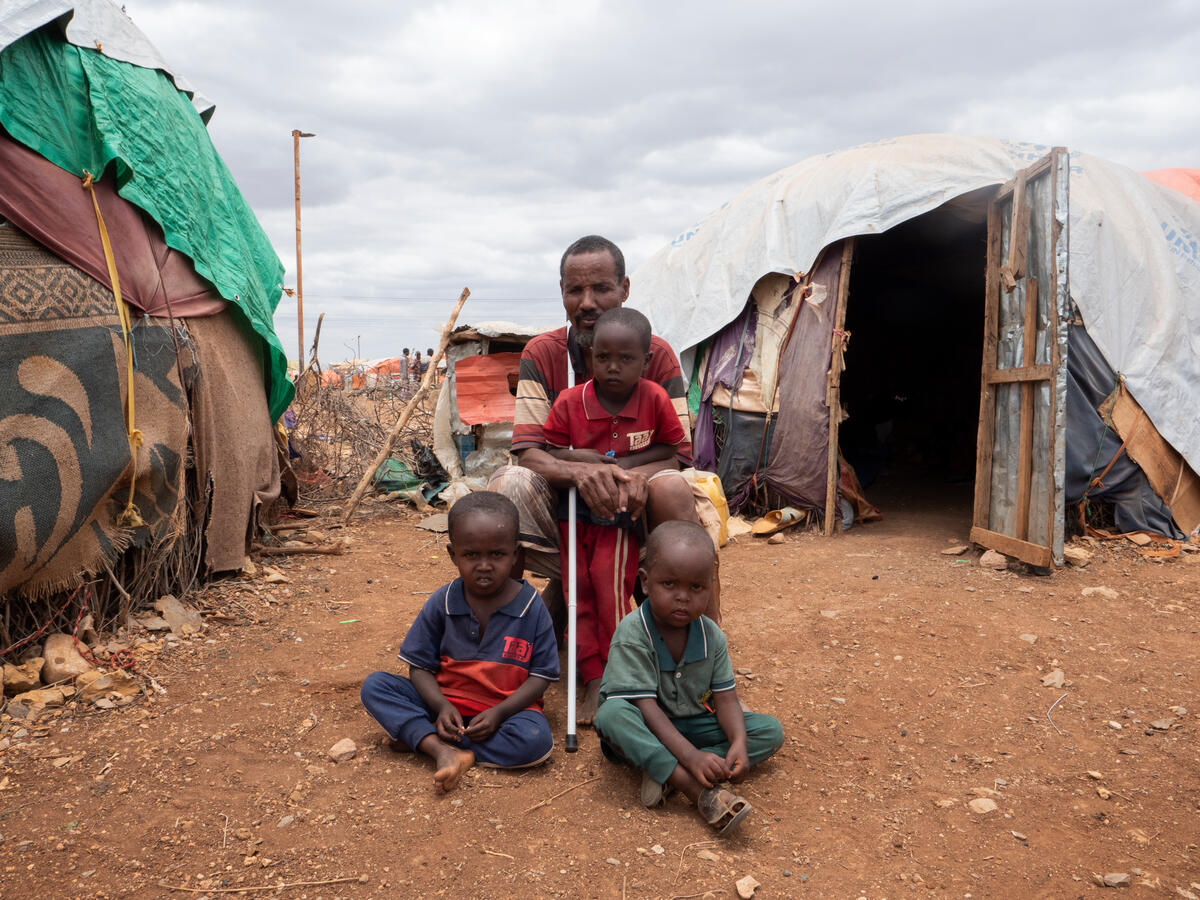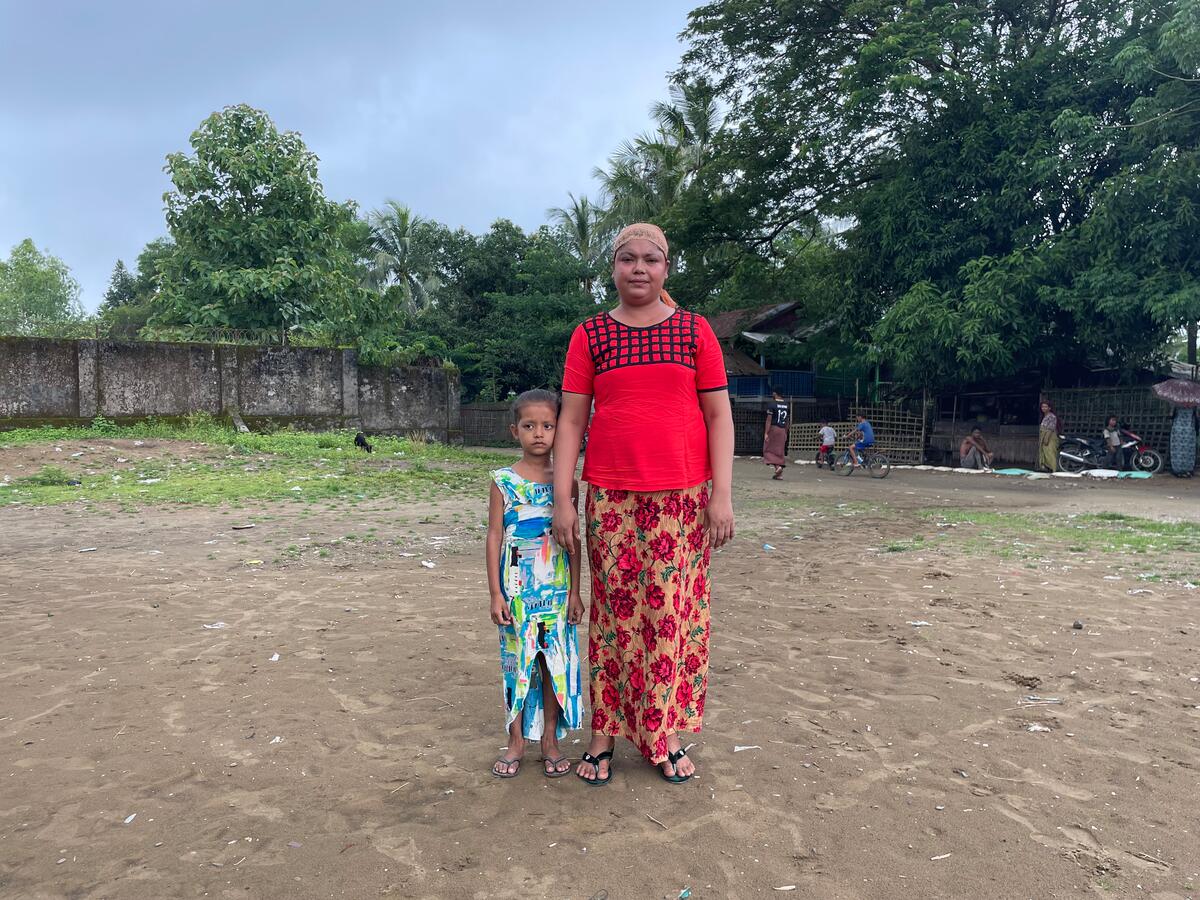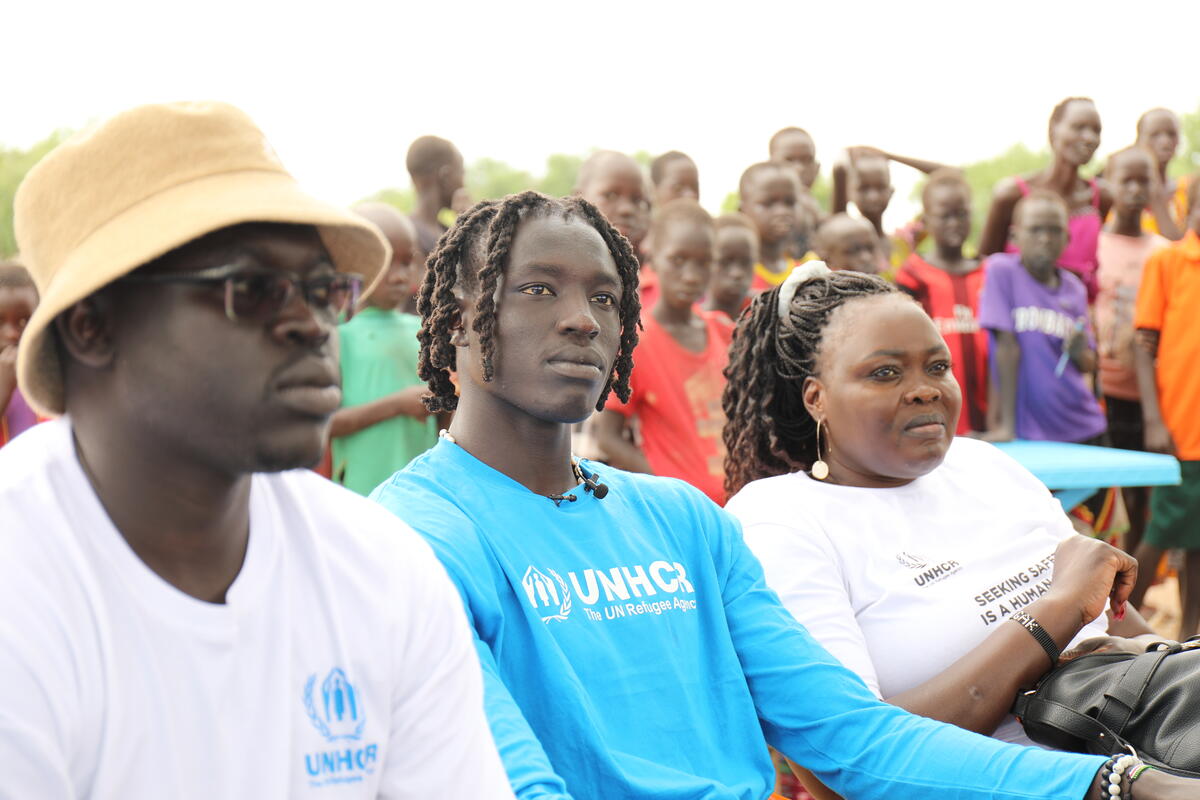Building bridges in Congo – physically and symbolically
Building bridges in Congo – physically and symbolically

BUNIA, Democratic Republic of the Congo, August 31 (UNHCR) - The new Simbilyabo Bridge that UNHCR built on the Ngezi River here in north-eastern Democratic Republic of the Congo (DRC) has paid huge tangible benefits. It's cut two hours off the walk between towns on opposite sides of the river, made it safer for children to go to school, and allowed farmers and livestock herders to move to market more easily.
But the peace dividends in a part of the world long plagued by war have been even more significant. "We are on better terms with other clans on both sides of the river," says 43-year-old Grodya Londjiringa as she crosses the seven-metre-long stone and wood bridge that now connects former rival ethnic groups along the river in Bunia, capital of Ituri District.
Balancing her merchandise on her head, the petite trader describes the bridge as a symbol of unity and increased social exchange, replacing a rickety old makeshift crossing that could not support any vehicles.
When UNHCR began to facilitate returns of displaced people to this region in November 2007 - after the end of bloody inter-ethnic clashes that began in 1999 - it also began to repair infrastructure like bridges and markets.
"The objective was not just a routine response to increasing social and livelihood needs of the returning populations," says Tane Bamba, head of UNHCR's office in Bunia. "It was also to strengthen relations and connect host families with those returning to their villages." The hope was that improving living conditions and social interactions among former rivals could prevent future bloodshed.
"Through reviving critical social services," Bamba adds, "former rival clans, that were also cut off from the social amenities of greater Bunia, will connect with each other."
Grodya, a mother of four, has lived through all the violence that has convulsed eastern DRC, largely unnoticed by the outside world. The conflict has ravaged schools, hospitals and roads, and killed the cash economy. Civilians were often on the run, children out of school, women a target of sexual violence.
"I recall the bloody inter-ethnic clashes that started in 1999 on both sides of the Ngezi River. It was a conflict we do not wish to happen again," Grodya says. "If our blood that flowed with the Ngezi failed to unite us in death, we the survivors should."
In addition to the bridge, UNHCR has also financed boats that are connecting people of various tribes - and becoming symbolic bridges in their own right.
"People from different tribes killed each other and never talked again," says Sezikana Tagirabo, 37-year-old woman who was displaced from her own village by war for four years.
"Now that they are obliged to cross the river together in UNHCR boats," she says, "they broke the taboo and talked, because each day they have to share and cross on the same boat."
By David Nthengwe in Bunia, Democratic Republic of the Congo


